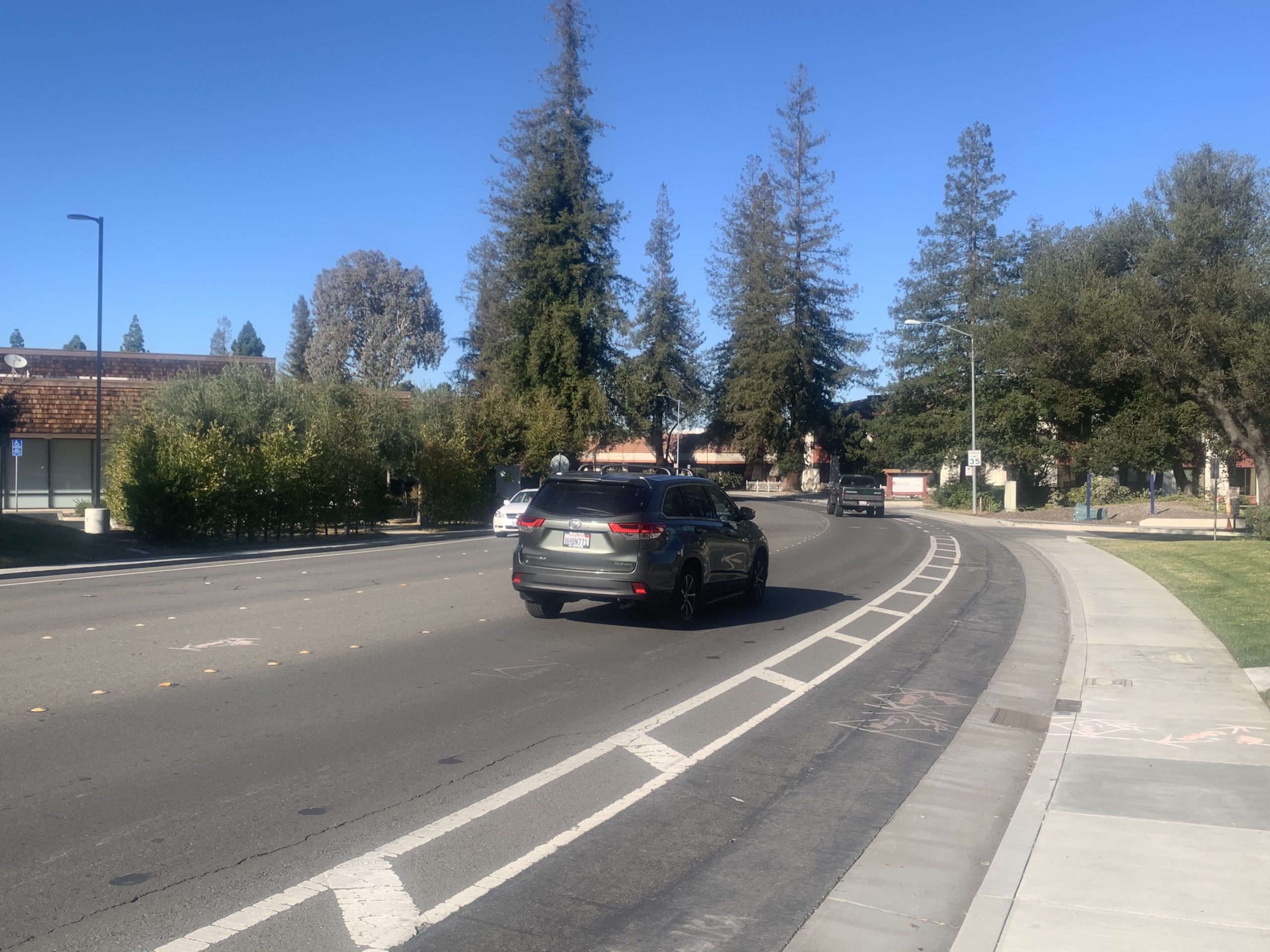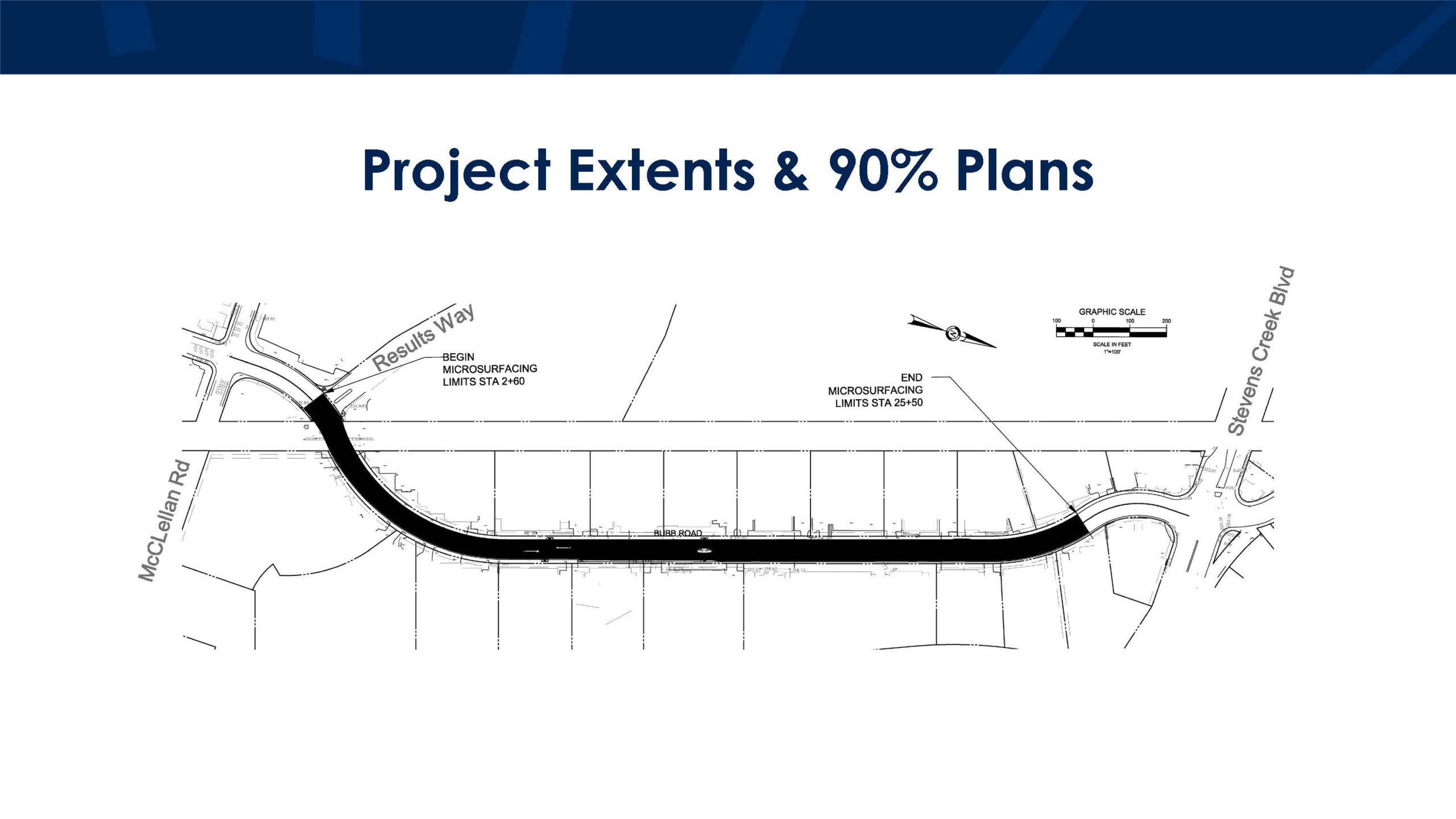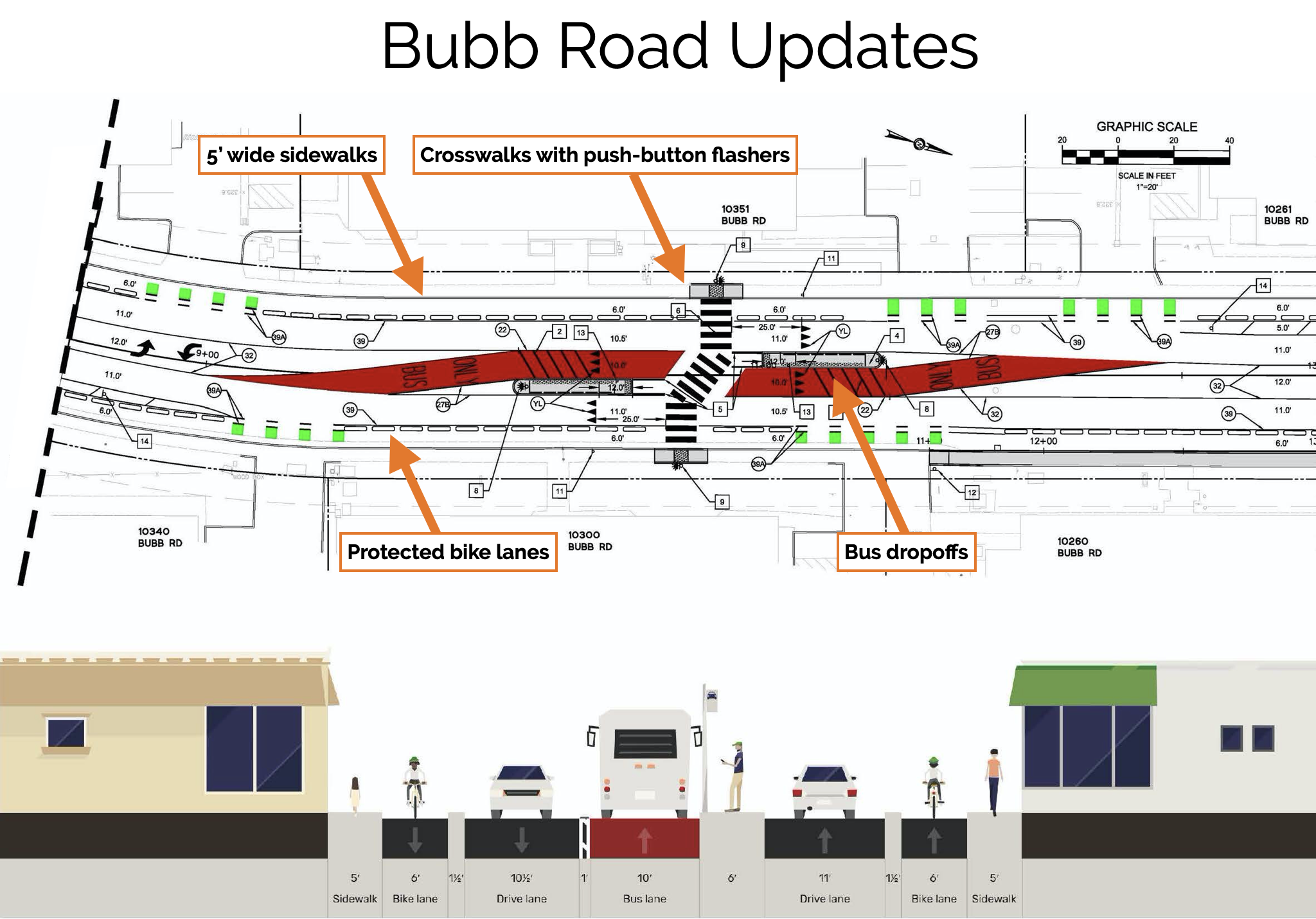At the February 2, 2021 Cupertino City Council meeting, the Council approved a contract with Granite Rock (Correction: we incorrectly named the contractor as Granite Construction in the newsletter) to re-engineer Bubb Road. The changes will extend from Results Way to the South (close to McClellan Road) to the Stevens Creek Boulevard intersection near the Cupertino Post Office. The $775K contract stipulates that construction will begin in March 2021. The project plans are shown below.
Major features of the project will include:
- Physically separated (with barriers) Class IV lanes along both sides of Bubb Road between Stevens Creek Boulevard and McClellan;
- A mid-road bus loading/offloading platform (near Results Way) that will accommodate Apple Employees and future VTA buses;
- Two additional pedestrian crossings with pedestrian activated crossing lights.
The Bubb Road project will maintain one lane of direction for vehicle traffic. The current intersection designs of Bubb/McClellan and Bubb/Stevens Creek Boulevard will be unaffected. Note, the Bubb/SCB intersection will eventually be improved when the Class IV separated bike lanes are designed on Stevens Creek Boulevard later this year.
The extent of the project. Click on the image for a larger view.

Current conditions on Bubb Road. There is a painted bike lane (Class 2 bike facilities).
What other projects has Apple funded?
Apple donated $1.8M in 2019 and $9.8M in 2020 to fund:
- Complete construction on the McClellan Road Class IV separated bike lanes;
- Design and construction of the Stevens Creek Blvd Class IV separated bike lanes from Tantau to Wolfe Road;
- Design and construction of the Bubb Road Class IV separated bike lanes and bus lanes re-engineering;
- Design and construction of the Mary Avenue painted bike lanes (Class II) and parking lane adjustments (bike lanes are between sidewalk and parked cars);
- Design for the Junipero Serra (I-280) Trail;
- Design and construction of all phases of all school Walk Audit projects in Cupertino.
The new plan for Bubb Road. Click on the image for a larger view.
The information in this article is solely the opinion of the author and Walk-Bike Cupertino and does not reflect the opinions of any other organization or entity. For more information, contact WBC at info@walkbikecupertino.org.



As a bicyclist I also strongly dislike McClellan protected bike lanes.
1. It’s impossible to pass (I know that I can take the traffic lane, but just getting out/into the protected lane is impossible so I would be riding and slowing down the traffic for quite a long time)
2. It’s difficult/impossible to make a left turn
3. It’s an often used by pedestrians…
4. Concrete barriers create a tipping/tripping danger for cyclists
As a driver, I have a complementary set of complaints (they are hard to see, they force cyclists into traffic for extended periods of time, etc)
I do think that light protection for bike lanes ( wider (painted) separator or even sparse traffic poles) is beneficial though
The curbs that protect the bike lanes are very visible to motorists during the day, not so much during rain and fog. I would think it much safer in the curbs were painted with white reflective “bead” paint so they are very apparent at night. Much better than the occasional reflector on a stubby pole.
Larry. I am a minority dissenter I guess on the bike barriers. I really dislike the ones along McClellan Rd and predict we’ll have a serious car-bike accident with them in place. The problem is that if a bike tire hits the barrier it will spill the cyclist into the adjacent car lane. It’s hard to pass slower cyclists and it’s a bit unnerving to have to steer for long distances between the narrows of the barrier and curb. I cast my vote against bike barriers and to use the space taken by barriers to instead create wider bike lanes clearly marked in green as done elsewhere and save the barriers for intersections where most car-bike accidents occur. Confession: I’ve ridden with other cyclists who also chose to cycle in the car lane when possible to avoid having to ride in the barrier strip. Some of the people I’ve cycled are city leaders you know well (I’ll leave it at that!).
Thanks Kent – I know what you mean, but for more experienced cyclists, getting out of the protected bike lanes and using car lane dis entirely appropriate. The protected lanes will be a major benefit to those less accomplished and who are in the 8 to 80 age span. I’m forwarding your comments to the city. Safe rides, Larry
Kent, thanks for the feedback. It highlights an important point that the protected bike lane needs to be wide enough to be comfortable for cyclists to ride. Unfortunately, on McClellan the street narrows in places forcing the lane to become tighter as a result. You’ll notice near the De Anza intersection, the bike lane widens. Though it’s still not wide enough to allow faster bikers to pass slower riders, it is much more comfortable to ride in. McClellan was a trade-off to provide safety to bike riders the best way possible. Is it perfect? No, but it achieves its purpose to keep kids ad less experienced bikers safe and encourage cars to slow down.